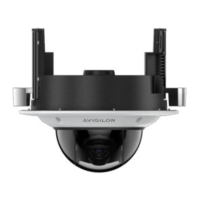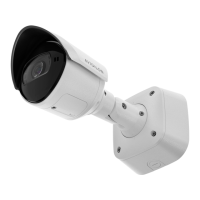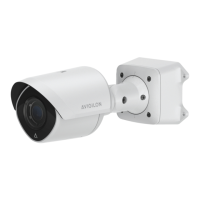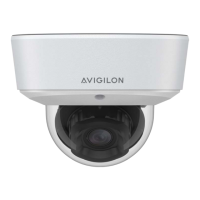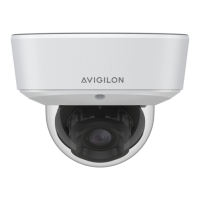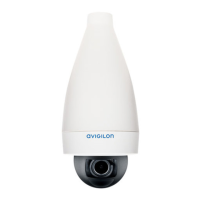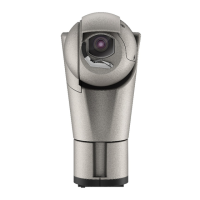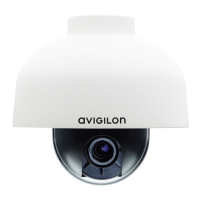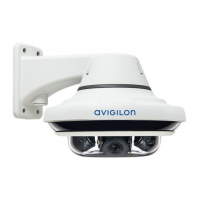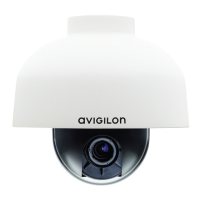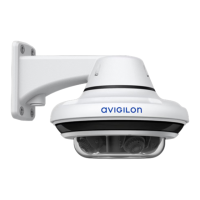Do you have a question about the Avigilon H6A Series and is the answer not in the manual?
Recommended browsers and device compatibility for accessing the camera's web interface.
Links to other relevant Avigilon camera web interface guides.
Steps to create the first administrator user and log into the camera.
How to capture and save still images from the live video stream to the SD card.
Camera identity, mode, and overlay settings configuration.
Setting up 802.1x authentication for network switch compatibility.
How to select and enable different saved 802.1x authentication profiles.
Procedure to remove previously saved 802.1x authentication profiles.
Setting up Simple Network Management Protocol for camera status monitoring.
Configuring rules to allow or deny access based on IP addresses.
Optimizing bandwidth by adjusting foreground and background compression.
Generating the Real-Time Streaming Protocol address for external video players.
Accessing the last recorded still image frame from the camera.
Fine-tuning HDSM SmartCodec settings for motion and idle scenes.
Enabling and configuring audio detection events for various sound types.
Steps to add and define privacy zones within the camera's field of view.
How to remove a previously created privacy zone.
Creating privacy zones that are blurred on secondary streams for specific user access.
Activating and configuring the camera's onboard storage feature using an SD card.
Enabling ONVIF Profile G for retrieving video during VMS outages.
Downloading recorded video files directly from the camera's web interface.
Downloading recorded video files directly from the SD card using a card reader.
Managing recorded video by deleting individual files or formatting the SD card.
Understanding and handling issues related to SD card failures and disabling.
Steps to create new user accounts with specific security group permissions.
Modifying existing user details, including passwords and security groups.
Deleting user accounts from the camera system.
Option to retain user credentials after a firmware revert.
Manual process for updating the camera's firmware.
Activating license keys automatically via internet connection.
Activating license keys manually when no internet access is available.
Verifying the currently connected power source for the camera.
| Vandal Resistance | IK10 |
|---|---|
| Sensor Type | Progressive Scan CMOS |
| Lens Options | varifocal and fixed |
| Focal Length | 2.8 mm to 12 mm |
| Minimum Illumination | 0.05 lux (color) |
| Day/Night | True Day/Night |
| IR Distance | up to 30 m |
| Video Compression | H.264, H.265, MJPEG |
| Frame Rate | up to 30 fps |
| Network Interface | Ethernet |
| Power Supply | PoE (IEEE 802.3af), 12 VDC |
| Operating Temperature | -40°C to 60°C |
| Ingress Protection | IP66 |
| Wide Dynamic Range (WDR) | Up to 120 dB |
| Dimensions | varies by model |
| Weight | varies by model |
